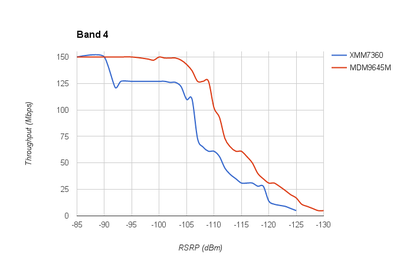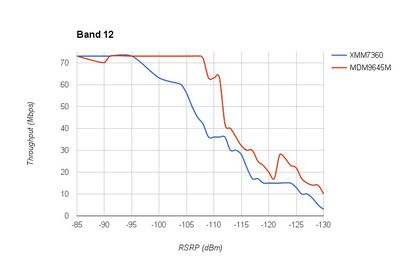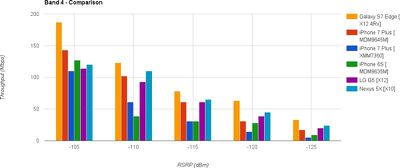With the iPhone 7 and the iPhone 7 Plus, Apple elected to use LTE modems from two different sources, Qualcomm and Intel. The A1778 and A1784 iPhone models use a GSM-only Intel XMM7360 modem while the A1660 and 1661 iPhone models use a GSM/CDMA-compatible Qualcomm MDM9645M modem.
Apple's decision has already caused some disappointment among customers because the GSM-only Intel modem is not compatible with as many carrier networks as the GSM/CDMA Qualcomm modem, and now independent testing conducted by Cellular Insights suggests there are some significant performance differences between the two modems, with the Qualcomm modem outperforming the Intel modem.
Using an R&S TS7124 RF Shielded Box, two R&S CMW500, one R&S CMWC controller, and four Vivaldi antennas, Cellular Insights created a setup to simulate LTE performance at different distances from a cellular tower using two iPhone 7 Plus devices, one with an Intel modem and one with a Qualcomm modem.
The goal of the test was to measure the highest achievable LTE throughput starting at a Reference Signal Received Quality of -85dBm (a strong signal) and gradually reducing the power level to simulate moving away from a cellular tower where signal is weaker. Three LTE bands were tested: Band 12, Band 4 (the most common band in North America), and Band 7.

In all three tests, both the iPhone 7 Plus models offered similar performance in ideal conditions, but as power levels decreased, Cellular Insights saw "unexplainable sharp dips in performance" in the Intel modem, finding a gap "north of 30%" in favor of the Qualcomm iPhone 7 Plus. In the charts, the Qualcomm modem maintains noticeably higher throughput speeds than the Intel modem as signal strength decreases.

In real world conditions, this would suggest the Qualcomm modem does better in areas where the cellular connection is weak, with faster throughput speeds. Cellular Insights describes the Band 12 test below:
Both iPhone 7 Plus variants perform similarly in ideal conditions. At -96dBm the Intel variant needed to have Transport Block Size adjusted as BLER well exceeded the 2% threshold. At -105dBm the gap widened to 20%, and at -108dBm to a whopping 75%. As a result of such a huge performance delta between the Intel and Qualcomm powered devices, we purchased another A1784 (AT&T) iPhone 7 Plus, in order to eliminate any possibility of a faulty device. The end result was virtually identical. [...]
At -121dBm, the Intel variant performed more in line with its Qualcomm counterpart. Overall, the average performance delta between the two is in the 30% range in favor of the Qualcomm
Cellular Insights also created a chart that compares the edge of cell performance of several different smartphones. The increasing numbers on the X-axis below represent increasingly poor signal strength, while on the Y-axis, a higher throughput number indicates better performance. The iPhone 7 Plus with an Intel modem demonstrates the poorest performance of all phones tested.

According to Cellular Insights, in every single test, the iPhone 7 Plus with a Qualcomm modem "had a significant performance edge" over the iPhone 7 Plus with an Intel modem.
For more information on the testing methodology and greater technical detail on the results, make sure to check out Cellular Insights' full comparison article.
























